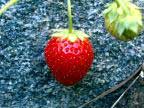Classification Of Fruits

Fruits make up the most of our diet and we all are fond of them. To come up with an apt turn of phrase for fruits is not that easy. In botanist term, a fruit can be defined as part of a flowering plant that derives from specific tissues of the flower, one or more ovaries, and in some cases accessory tissues�. Helpful for dietary assessment and guidance, this piece of writing is all about the structure and classification of fruits.
 Simple Fruits
Simple Fruits
Containing one or more carpels, simple fruits, take roots from a single ovary and may or may not take in further modified accessory floral (perianth) structures. It will be either fleshy or dry; fleshy fruits include the berry, drupe, pome, pepo, and hesperidium.
 Compound fruits
Compound fruits
The word compound fruit is not used with regards to technical botanical writing however is at times used when it is not obvious which of quite a few fruit types is involved. In general, they are composed of two or more similar parts.
It may refer to:
![]() An aggregate fruit, in which one flower contains more than a few, divided ovaries, which fuses together as it develops.
An aggregate fruit, in which one flower contains more than a few, divided ovaries, which fuses together as it develops.
 Accessory Fruits
Accessory Fruits
Occasionally called as false fruit, spurious fruit, pseudo fruit, or pseudo carp, as far as accessory fruit is concerned, some of the flesh is derived not from the ovary, although from some flanking tissue exterior to the carpel.
The following table describes the major types of fruits:
Simple Fruits (derived from a single ovary) |
Pericarp Fleshy |
Pericarp Indehiscent (does not split open when ripe) |
Pericarp Dehiscent (splits open when ripe) |
Drupe, Pome, Berry, Pepo |
Akene, Nut, Caryopsis |
Legume, Silique, Capsule, Follicle |
|
Multiple Fruit (derived from the varies of several flowers united into a single mass) |
Strawberry, Blackberry, Raspberry |
||
Aggregate Fruit (derived from numerous ovaries of a single flower that are scattered over a single receptacle and later unite to form a single fruit) |
Pineapple |
||















